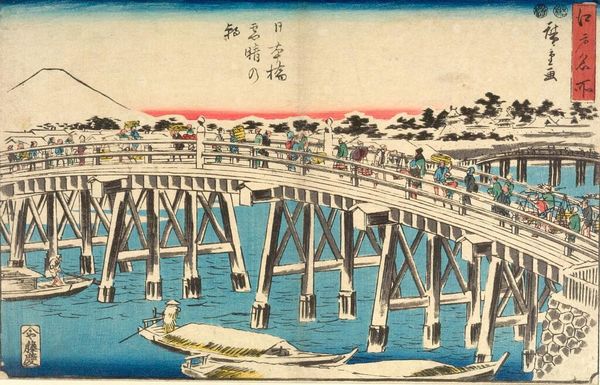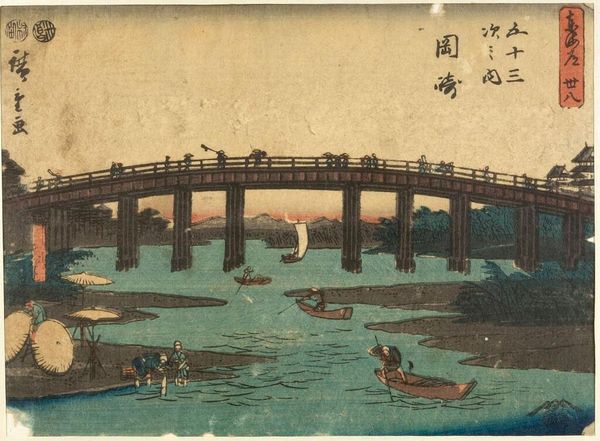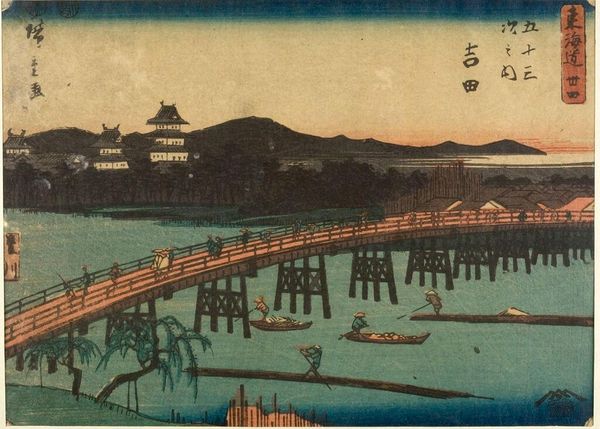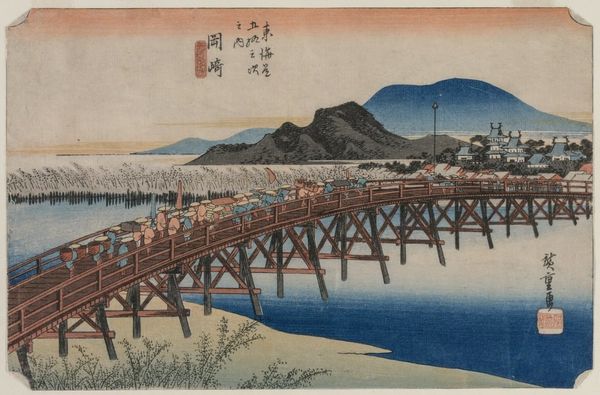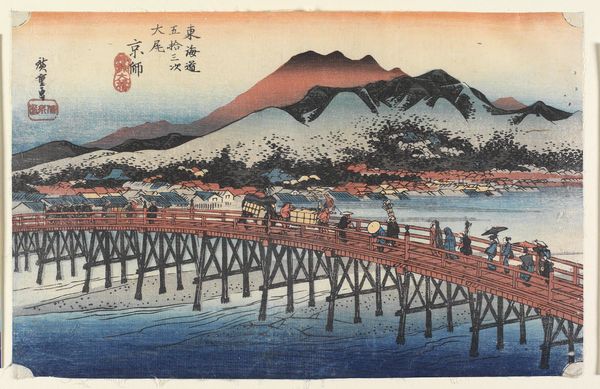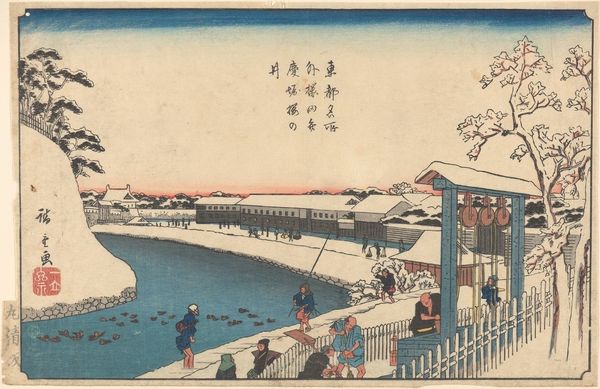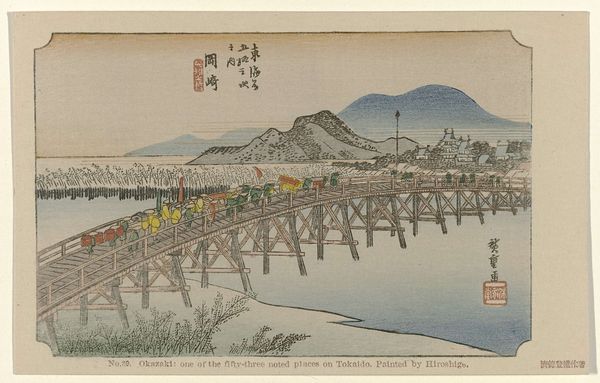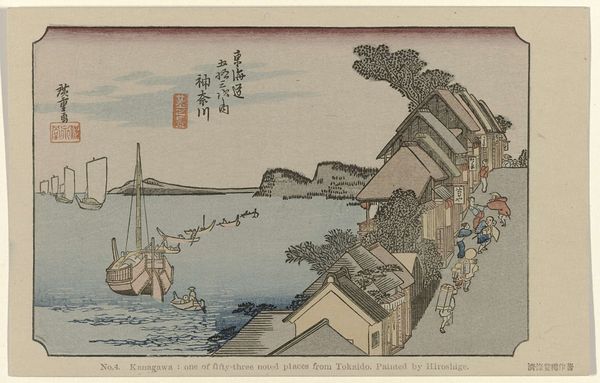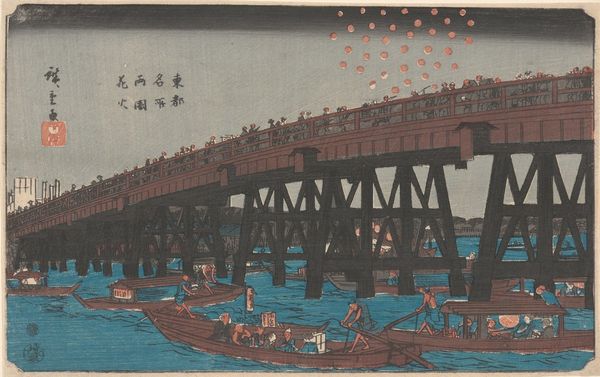
Copyright: Public Domain: Artvee
Editor: Here we have Utagawa Hiroshige’s "Nihonbashi in Snow," a woodblock print from the 19th century. It has a stillness to it, despite the people crossing the bridge. What jumps out at you when you look at it? Curator: The bridge, obviously. It dominates the visual space, but it's not merely a physical structure. Bridges are potent symbols. Think about it - they connect disparate spaces, facilitate transition. What might the cultural connotations of bridges be in 19th century Japan? Editor: I guess it represents connection, literally connecting different parts of the city or different social spheres? Curator: Precisely! But go deeper. Note how the snow softens the edges, blurs the details. Snow, like a bridge, is transformative, isn't it? It covers, obscures, unifies. Does that symbolism relate to how people felt about urban expansion during that era? Editor: That's interesting, the blurring almost makes it more… universal? The cityscape feels both specific and timeless. It seems like it captures a moment. Curator: Observe also the composition. Mount Fuji sits serenely in the background, a steadfast emblem amid the bustling life crossing over the bridge. The woodblock style lends a graphic, stylized quality. And even beyond what’s depicted, consider the print medium itself: repeatable images spreading culture quickly to many people. A powerful communication tool, wouldn’t you say? Editor: Definitely! I hadn’t thought about the symbolism of the snow so much, and it really makes the entire scene richer, adding to that stillness I noticed at the beginning. Curator: Exactly. Hiroshige wasn’t just depicting a landscape, he was embedding it with layers of meaning. Visual culture encodes collective experience – symbols and history combined.
Comments
No comments
Be the first to comment and join the conversation on the ultimate creative platform.
